Just like in the case of the Gobiiformes fish order, which was considered to be the suborder of the Perciformes order until recently, Blenniiformes became a separate order not so long ago, and it belongs to the Ovalentaria clade now. But we won’t go into details of classifications. So let’s stay old school and consider them in the part of the articles where we deal with fish of the Perciformes family.
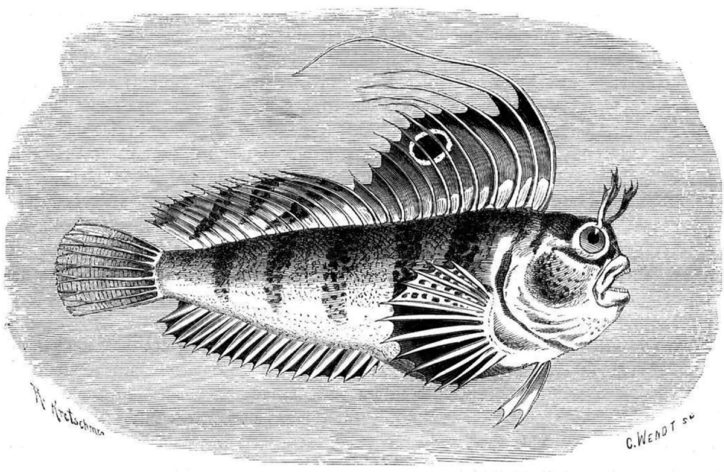
(Butterfly blenny. Drawing © dic.academic.ru)
Representatives of the Blenniiformes order are mainly small fish inhabiting the areas near the bottom. They have rather large eyes and mouths. The way they look only vaguely resembles some fish of the Gobiiformes order. They are predominantly solitary fish. They mainly inhabit seawater. However, some species are found in brackish and freshwater areas of seas and water bodies.
Giant kelpfish (Heterostichus rostratus) of the Clinidae family, which inhabits the areas near the western coast of North America and can be more than 60 centimeters long, is the largest representative of the order.
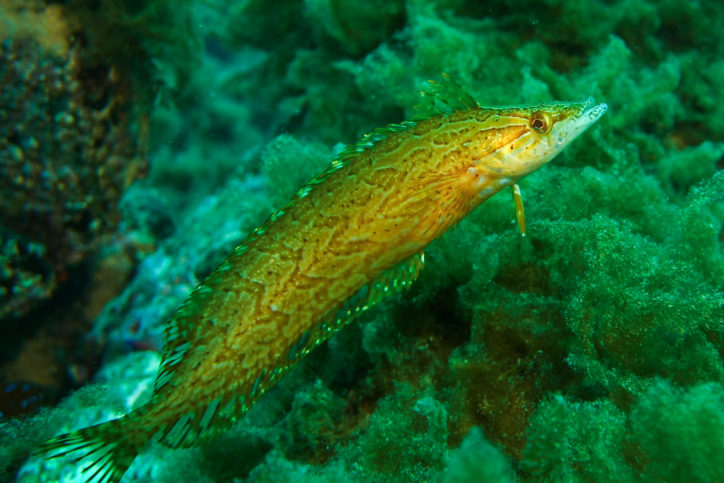
(Giant kelpfish. Photo by © Steven Sennikoff. inaturalist.org)
The Blenniiformes order comprises more than 930 fish species of 6 families. 16 representatives of the Blenniidae family, 1 representative of the Clinidae family and 3 representatives of the Tripterygiidae family inhabit the Adriatic Sea:
Sphinx blenny (Aidablennius sphynx).
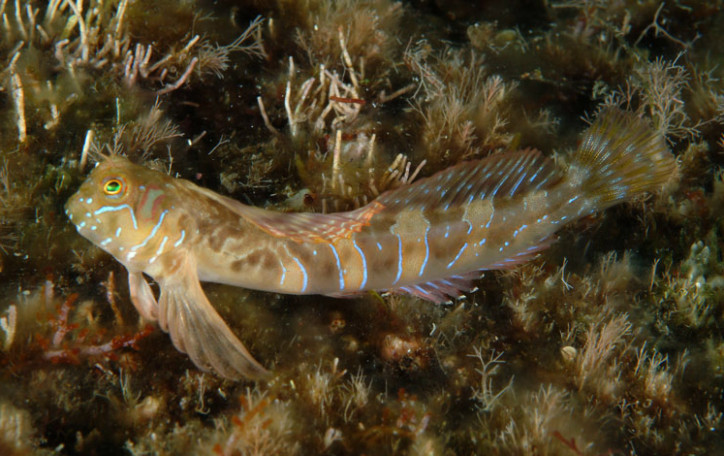
(Sphinx blenny. Photo by © Stefano Guerrieri. naturamediterraneo.com)
It inhabits the coastal zone. It dwells near a stony bottom, overgrown with aquatic vegetation. The maximum recorded length is 8 cm. It feeds on invertebrates and algae. It is a permanent inhabitant of the Adriatic Sea.
Butterfly blenny (Blennius ocellaris).

(Butterfly blenny. Photo by © Francesco Pacienza. flickr.com/photos/francescopacienza)
It inhabits the depth of 10-400 meters. It dwells near a sandy and silty bottom. The maximum recorded length is 20 cm. It feeds on crustaceans, worms. It has nocturnal habits. It is a permanent inhabitant of the Adriatic Sea.
Montagu‘s blenny (Coryphoblennius galerita).

(Montagu’s blenny. Photo by © Roberto Pillon. fishbase.org)
It occurs next to the coastal zone, hiding under stones. The maximum recorded length is 7.6 cm. It feeds on crustaceans and algae. It is a permanent inhabitant of the Adriatic Sea.
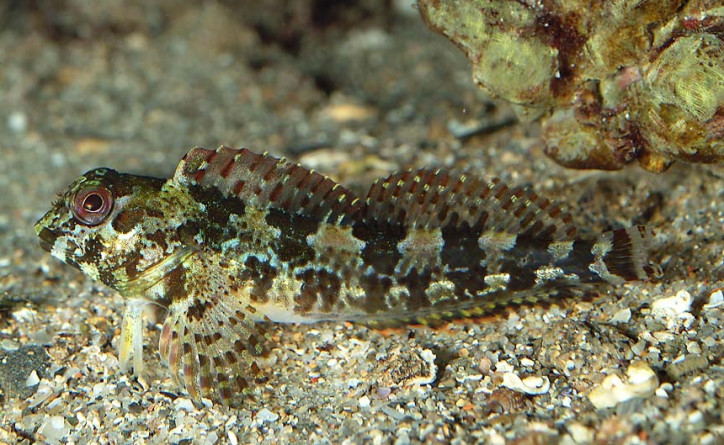
(Lipophrys trigloides. Photo by © Circolo Attività Subacquee Chieri. casc.it)
It occurs in the tidal zone, hiding in crevices and hollows of rocks. The maximum recorded length is 13 cm. It feeds on mollusks, other benthic invertebrates, and algae. It has nocturnal habits. It is inactive species, can remain out of the water for up to 10 hours, hiding in the shelters of the shore. It is a permanent but infrequent inhabitant of the Adriatic Sea.
Adriatic blenny (Microlipophrys adriaticus).

(Adriatic blenny. Photo by © Roberto Pillon. fishbase.org)
It inhabits at depths of up to 5 meters. It occurs in the tidal zone, hiding in crevices and hollows of rocks. The maximum recorded length is 5 cm. It feeds on small invertebrates and algae. It is a permanent inhabitant of the Adriatic Sea. It is more common in the southern part of the sea.
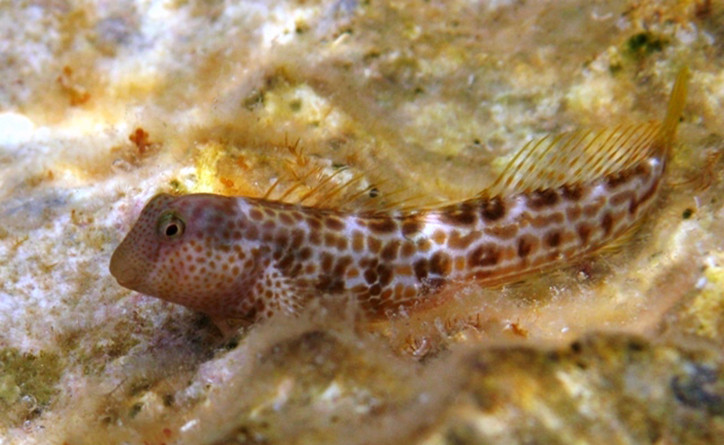
(Microlipophrys canevae. Photo by © Roberto Pillon. fishbase.org)
It inhabits at depths of up to 2 meters. It occurs in the tidal zone, hiding in crevices and hollows of rocks. The maximum recorded length is 7.5 cm. It feeds on small invertebrates and algae. It is a permanent inhabitant of the Adriatic Sea.
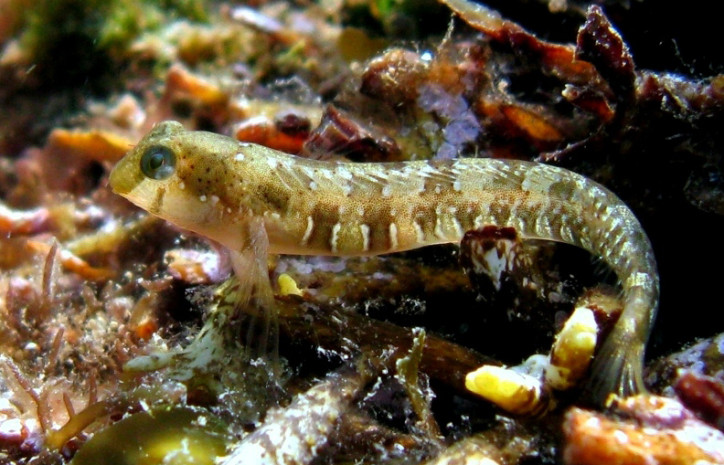
(Microlipophrys dalmatinus. Photo by © Roberto Pillon. fishbase.org)
It inhabits the depth of 1-2 meters. It occurs near rocky shores covered with filamentous algae, it is hiding in crevices. The maximum recorded length is 4.1 cm. It feeds on zooplankton and algae. It is a permanent inhabitant of the Adriatic Sea.
Black–headed blenny (Microlipophrys nigriceps).
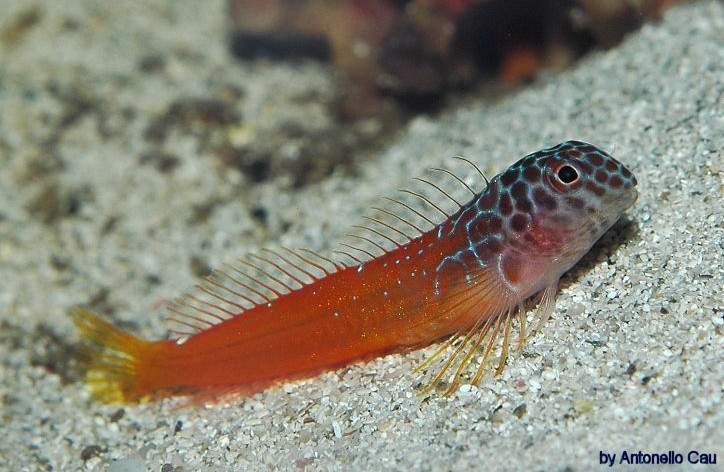
(Black-headed blenny. Photo by © Antonello Cau. aiam.info)
It inhabits at depths of up to 6 meters. The maximum recorded length is 4.3 cm. It feeds on small invertebrates and algae. It is a permanent inhabitant of the Adriatic Sea.
Tompot blenny (Parablennius gattorugine).
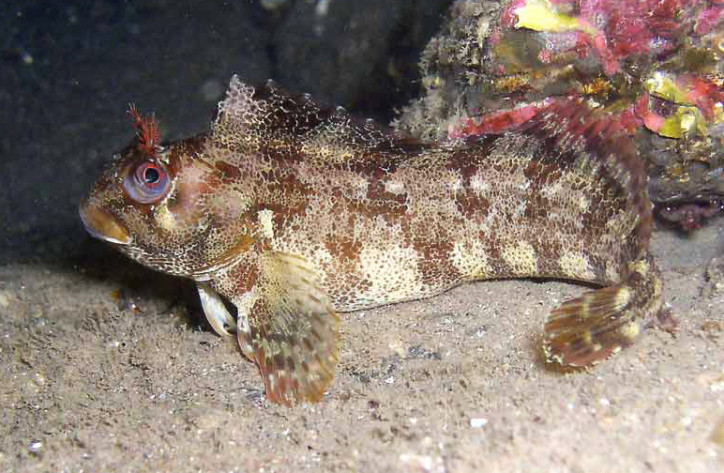
(Tompot blenny. Photo by © Paul Newland. marlin.ac.uk)
It inhabits a depth of 3-32 meters. It occurs above a rocky bottom. The maximum recorded length is 30 cm; specimens up to 17 cm long are more common. It feeds on crustaceans, mollusks, and worms. It is a permanent inhabitant of the Adriatic Sea.
Mystery blenny (Parablennius incognitus).

(Mystery blenny. Photo by © Roberto Pillon. fisbase.org)
It inhabits at depths of up to 2 meters. It occurs near the rocky shore. The maximum recorded length is 5.8 cm. It feeds on small invertebrates and algae. It is a permanent inhabitant of the Adriatic Sea.
Longstriped blenny (Parablennius rouxi).
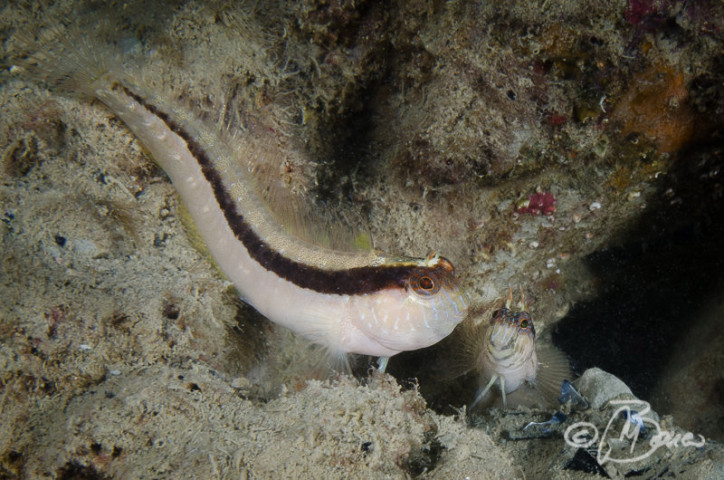
(Longstriped blenny. Photo by © Marco Boncompagni. marcoboncompagni.it)
It inhabits at depths of up to 42 meters. It occurs near a pebble and rocky bottom, not overgrown with algae. The maximum recorded length is 8 cm. It feeds on zooplankton. It is a permanent inhabitant of the Adriatic Sea. It is more common in the southern part of the sea.
Rusty blenny (Parablennius sanguinolentus).
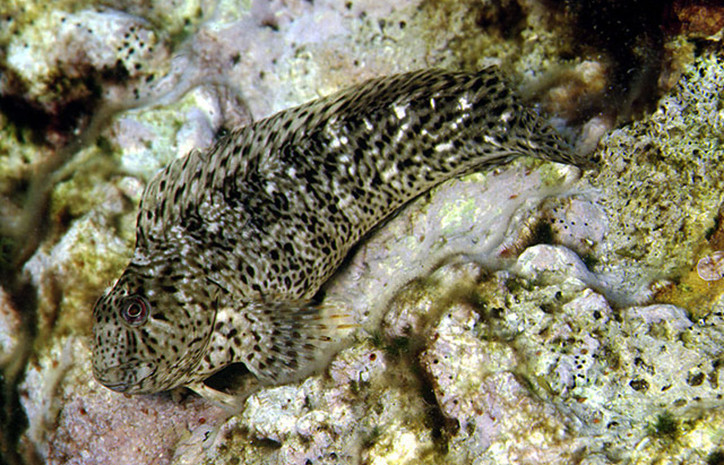
(Rusty blenny. Photo by © Robert A. Patzner. fishbase.org)
It inhabits at depths of up to 1 meters. Usually occurs near the border of a clean bottom and filamentous algae. The maximum recorded length is 20 cm; specimens up to 12.5 cm long are more common. It feeds mainly on algae. It is a permanent inhabitant of the Adriatic Sea.
Tentacled blenny (Parablennius tentacularis).
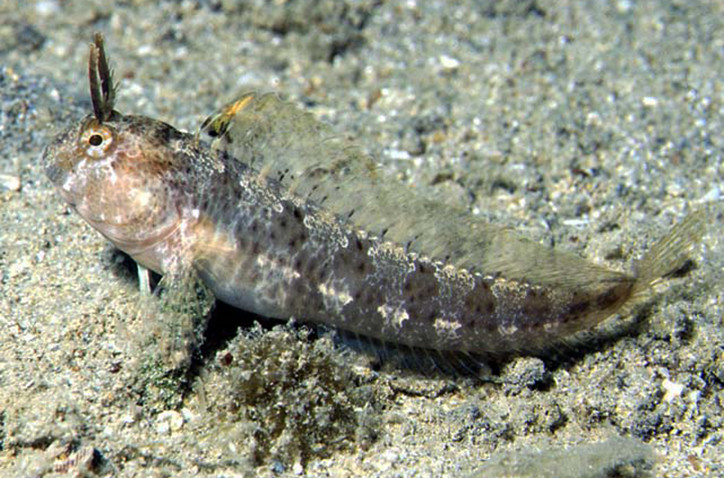
(Tentacled blenny. Photo by © Robert A. Patzner. fishbase.org)
It inhabits the depth of 3-15 meters. It occurs near the sandy bottom next to large stones. The maximum recorded length is 15 cm. It feeds on small bottom organisms and algae. It is a permanent inhabitant of the Adriatic Sea.
Zvonimir‘s blenny (Parablennius zvonimiri).
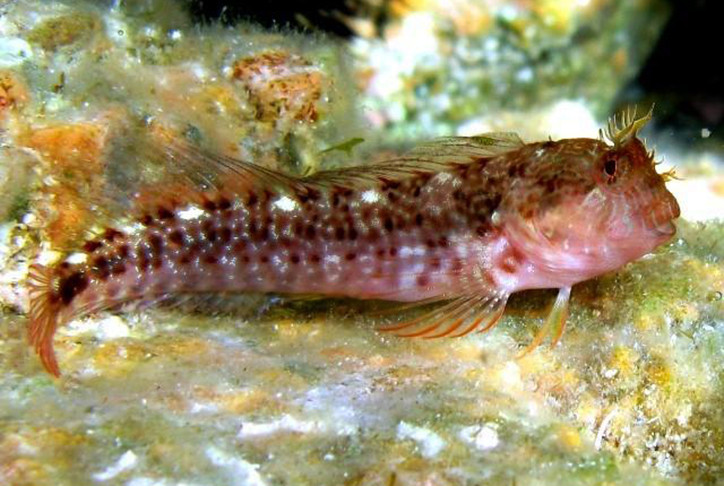
(Zvonimir’s blenny. Photo by © Roberto Pillon. fishbase.org)
It inhabits a depth of 6-12 meters. It dwells on poorly lit areas under overhanging cliffs and other shelters. The maximum recorded length is 7 cm. It feeds on small bottom organisms. It is a permanent inhabitant of the Adriatic Sea.
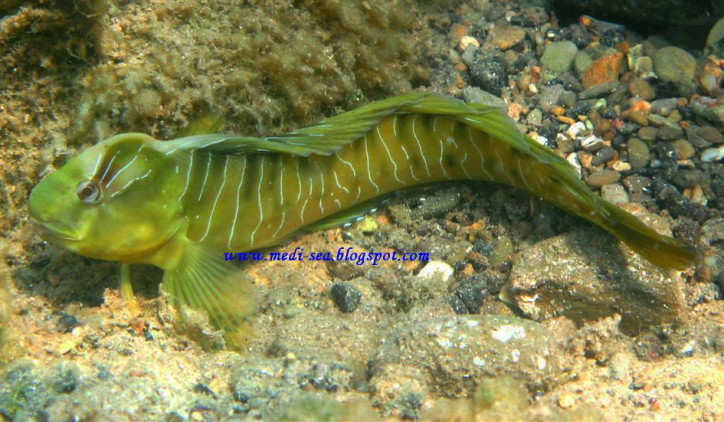
(Salaria basilisca. Photo © medi-sea.blogspot.com)
It inhabits the depth of 2-15 meters. It occurs near a rocky bottom covered with aquatic vegetation. The maximum recorded length is 18 cm. It feeds on small bottom organisms. It is a permanent but rare inhabitant of the Adriatic Sea.
Peacock blenny (Salaria pavo).
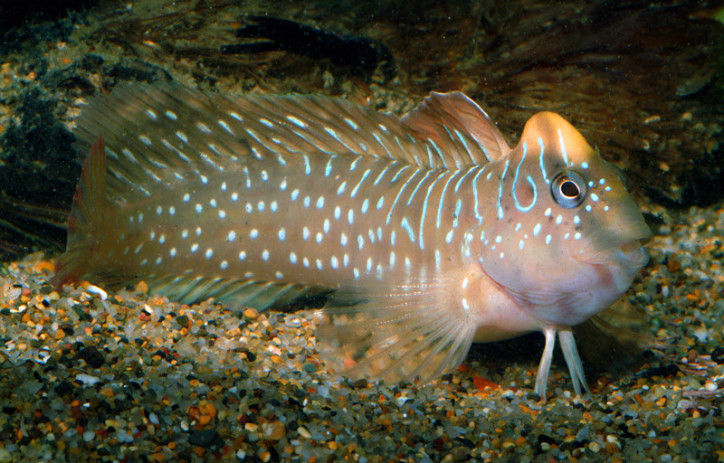
(Peacock blenny. Photo by © Stefano Guerrieri. en.wikipedia.org)
It often occurs near river mouths, in lagoons and coastal waters near a sandy and rocky bottom, in thickets of algae. The maximum recorded length is 13 cm. It feeds on small bottom organisms and algae. It is a permanent inhabitant of the Adriatic Sea.
Cline (Clinitrachus argentatus).

(Cline. Photo by © Circolo Attività Subacquee Chieri. casc.it)
It occurs near the coast in beds of underwater vegetation. The maximum recorded length is 10 cm. It feeds on small bottom organisms. It is a permanent infrequent inhabitant of the Adriatic Sea.
Black–faced blenny (Tripterygion delaisi).

(Black-faced blenny. Photo by © Fabio Vitale. naturamediterraneo.com)
It inhabits at depths of up to 40 meters, usually 6-12 meters. It dwells on poorly lit areas under overhanging cliffs and other shelters. The maximum recorded length is 8.9 cm. Males during the mating season are painted brighter than females. It feeds on small bottom organisms.

(Black-faced blenny male. Photo © webplongee.com)
It is a permanent but infrequent inhabitant of the Adriatic Sea.
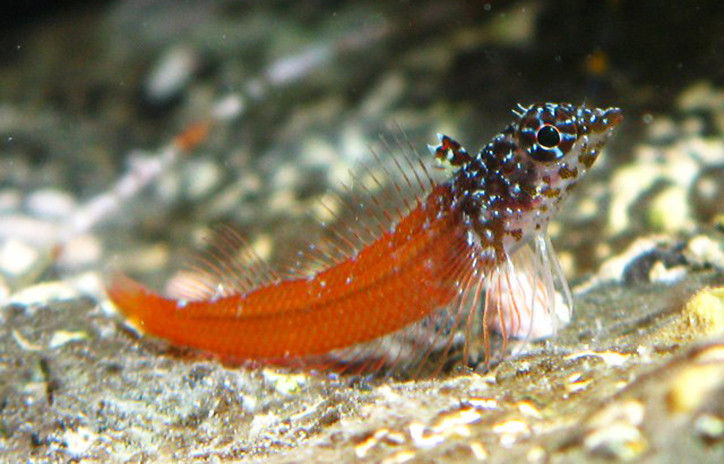
(Tripterygion melanurum. Photo by © Jure Miočić-Stošić. fishbase.org)
It inhabits at depths of up to 12 meters. It dwells on poorly lit areas under overhanging cliffs and other shelters. The maximum recorded length is 5.3 cm. It feeds on small invertebrates. It is a permanent but rare inhabitant of the Adriatic Sea.
Red–black triplefin (Tripterygion tripteronotum).
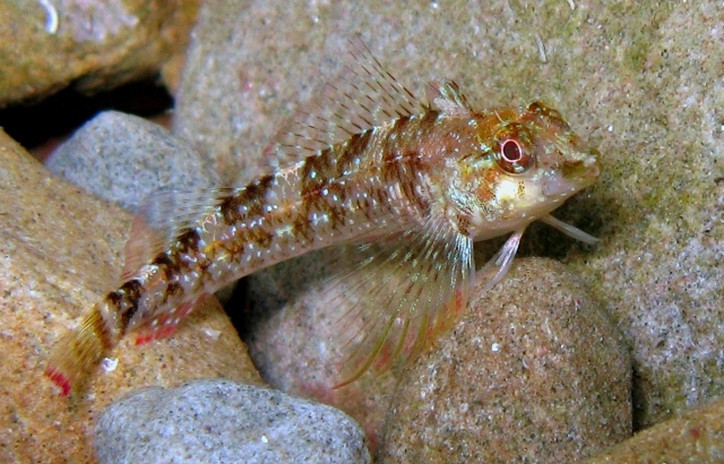
(Red-black triplefin female. Photo by © Roberto Pillon. fishbase.org)
It inhabits a depth of 6-12 meters. It dwells near a stony bottom. The maximum recorded length is 6.5 cm. It feeds on small invertebrates. Males are brighter than females.

(Red-black triplefin male. Photo by © Roberto Pillon. fishbase.org)
It is a permanent but infrequent inhabitant of the Adriatic Sea.